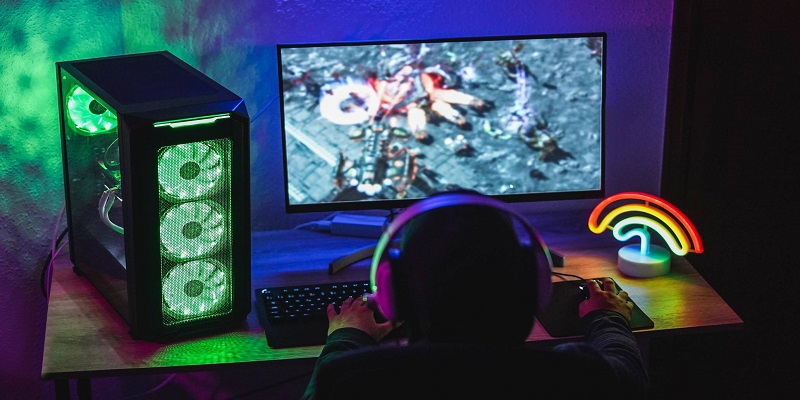
Throughout 2020, the global pandemic created new opportunities for many consumer technologies, and gaming PCs and monitors have arguably been among the greatest beneficiaries. As consumers spent more hours at home and fewer dollars outside, shipments of gaming PCs and monitors grew by 26.8 per cent year-over-year in 2020 to 55 million units, according to the International Data Corporation (IDC) Worldwide Quarterly Gaming Tracker. The growth rate and unit volume were the fastest and largest numbers recorded since IDC began tracking this market in 2016.
IDC’s Worldwide Quarterly Gaming Tracker gathers data in more than 50 countries and provides detailed, timely, and accurate information on the global gaming PC and display market.
Aside from the sheer volume, 2020 brought other milestones that could alter future trends. North America and Western Europe together overtook Asia/Pacific (including Japan) as the largest market for the first time, largely due to lockdown-induced demand. Gaming notebooks remained the biggest volume driver through a year marked by home restrictions. Despite being affected by display panel shortages throughout much of the year, gaming notebooks grew by a record of 26.9 per cent in 2020 as consumers appreciated their versatility for both work and play. In parallel with PCs, gaming monitors also reached new heights in 2020, growing by more than 77 per cent compared to 2019 with shipments reaching 14.3 million units.
Looking ahead, IDC expects the gaming market to remain a bright spot after the overall PC market returns to more normal replacement cycles after the pandemic. While gaming desktops will continue to fade in favor of notebooks, their demise will be more than made up for by notebooks and monitors. For example, IDC expects gaming monitor volume will exceed that of gaming desktops for the first time in 2021. Even as gaming desktops increasingly fall out of favor, except for the DIY and hardcore gaming segments, growing monitor attach rates to gaming notebooks means the gaming monitor market is expected to see a five-year compound annual growth rate (CAGR) of over 10 per cent. IDC expects this momentum to carry forward as global volumes reach 72.9 million in 2025 with a CAGR of 5.8 per cent
“Unfortunately, the supply of gaming PCs has tumbled recently and while crypto-mining may be partially to blame, the sheer demand for these products and growth in the player base is more likely the root cause of the shortages. New GPUs, new games, added support for ray-tracing, and the growth in demand have also led to an increase in average selling prices during 2020 and will likely remain at these elevated levels in 2021,” said IDC’s Worldwide Mobile and Consumer Device Trackers research manager Jitesh Ubrani.
“Much like the notebook market, monitors also faced panel component shortages and surging demand. OEMs have to be wise about where to allocate scarce resources and it makes sense to meet gaming display demand as commercial buying and office occupancy in many markets remains weak. IDC expects gaming monitors to capture an increasingly larger share of the total monitor market in the years ahead,” said IDC’s Worldwide PC Monitor Tracker research manager Jay Chou .
India’s rising PC gaming players reflect the sales of gaming PCs and laptops
Due to the pandemic overall laptop and PC shipments to India fell barely by one per cent in 2020, approximately to 18 million units according to FICCI EY report 2021. According to Nodwin Gaming group CEO Sidharth Kedia, “India is a mobile first country when it comes to gaming and esports. However, gaming PC sales in growing quite rapidly and India can boast a significant PC gaming populace alongside its already burgeoning mobile base.”
As of 2020 leading PC games were PUBG, CS:GO, DOTA2 and Fortnite, however, Riot’s pandemic launch Valorant has tractioned a lot of popularity in the Indian gaming and esports ecosystem. A lot of Valorant tournaments are hosted and because of that it has given rise to a number of PC players and with a rise in the number of players, it reflects in the PC sales.
The shift from mobile to PC
While gaming in India really began on PCs in the early 2000s, this was followed quickly by a massive growth in gaming on mobiles. However, a recent Intel-Kantar study on the Gaming Ecosystem in India suggests that more than 90 per cent of mobile gamers in the country today show a preference for a shift to computers as a gaming device.
When Lenovo in 2020 revealed three gaming laptop segments (with Legion 7i, Legion 5Pi and Legion 5i), their spokesperson said that gaming will also grow at a higher rate because people are looking at high computing power for accelerating their work which will drive sales for Legion PCs.
“We expect double-digit growth in gaming PCs. We are creating a value market. This could be 15 to 20 per cent of our consumer segment revenue. It was around 10 to 12 per cent earlier,” Lenovo CEO and MD Rahul Agarwal said.
Because of the popularity of PC gaming and esports PC gaming, hardware companies are tying up with the esports organiser as partners, sponsors and so on. Taking example, Lenovo and AMD Ryzen partnered with The Esports Club for the LG Ultragear TEC Challenger Series followed by WD- Black and AMD Ryzen partnering with Skyesports for various tournaments including ongoing Skyesports League Valorant with prize pool of Rs 15,00,000.
Since the country continued to social distance, gamers are maintaining #PlayApartTogether rules by staying at home. Therefore it has accelerated gamers to opt for PC gaming as everyone is looking for an enhanced gaming experience with larger screens and better graphics. This will push the PC gaming market as well as the gaming hardware market to the next level in India.

